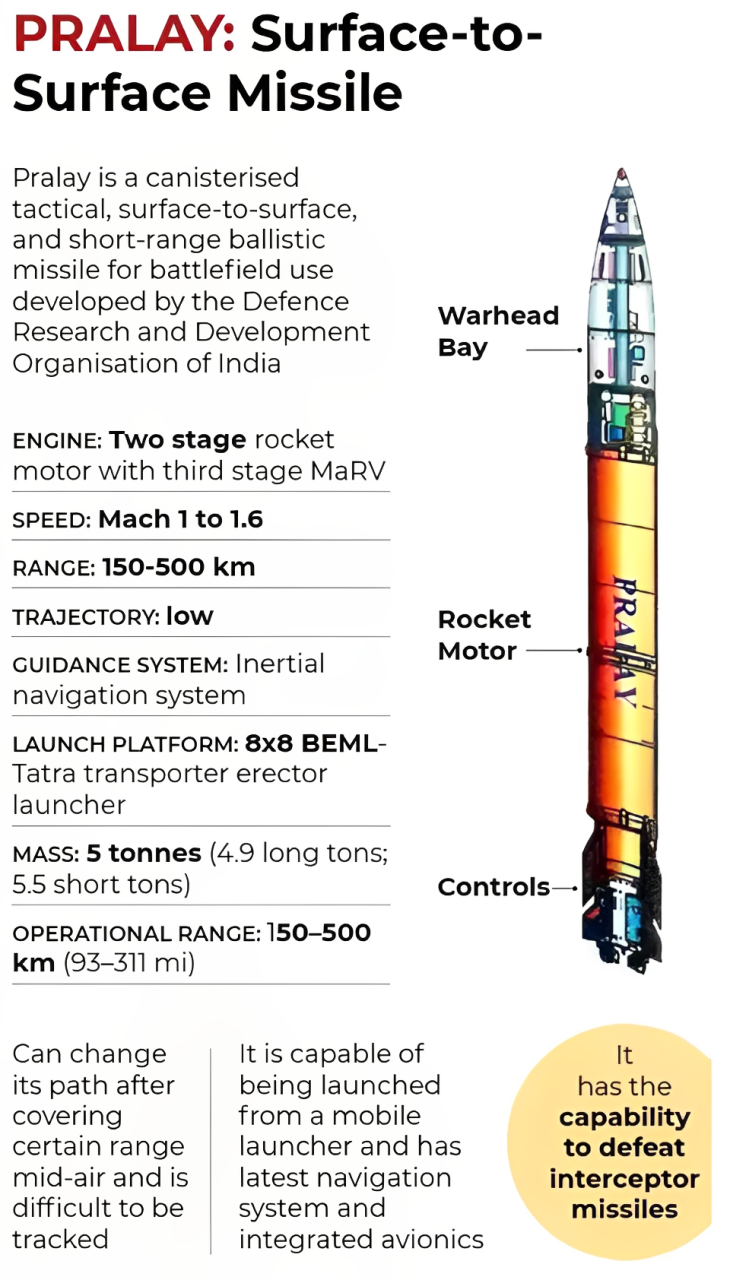Pralay Missile

Context: Two consecutive test flights of Pralay missile conducted by DRDO on July 28 and 29, 2025, from Dr. A.P.J. Abdul Kalam Island, Odisha.
Pralay Missile: Pralay means ‘Apocalypse’ in Sanskrit
-
Type: Solid-propellant, quasi-ballistic missile, Canisterised, surface-to-surface, short-range ballistic missile (SRBM)
-
Developed by: Defence Research and Development Organisation (DRDO).
-
Warhead Capability: Can carry multiple types of warheads.
-
Navigation: Equipped with state-of-the-art guidance and navigation systems.
-
Target Flexibility: Designed to neutralize a wide range of strategic targets.
Amalgamation of:
-
Prithvi Defence Vehicle (exo-atmospheric interceptor tech).
-
Prahaar Tactical Missile (mobile battlefield missile tech).
Part of India’s proposed Integrated Rocket Force (IRF).
-
Will complement systems like:
-
Nirbhay (subsonic cruise missile),
-
BrahMos (supersonic cruise missile),
-
Pinaka (multi-barrel rocket launcher system).
- Powered by a solid fuel rocket motor, the missile reportedly flies a quasi-ballistic trajectory in hypersonic speed, with the ability to perform terminal maneuvers to hinder anti-ballistic missile interceptors.
- Pralay uses the same composite propellant developed by High Energy Materials Research Laboratory for Sagarika from K Missile family. The composite propellant is highly efficient and generates more energy compared to propellant used in Agni missile series.
- Pralay carries 350-700 kg and 500-1,000 kg high explosive preformed fragmentation warhead, Penetration-Cum-Blast (PCB) and Runway Denial Penetration Submunition (RDPS) at a range of 150 km to 500 km.
- Pralay is designed to target radar and communication installations, command and control centers and advance airfields using conventional warhead.
- Pralay, Nirbhay, BrahMos and Pinaka will become part of the Integrated Rocket Force, a separate entity from the Strategic Forces Command.
